This site contains affiliate links. I may earn a small commission, at no extra cost to you.
Before you can create an effective skincare routine, determining your skin type can be helpful.
Two of the main types of skin are oily skin and dry skin. One involves excess oil, while the other lacks natural hydration.
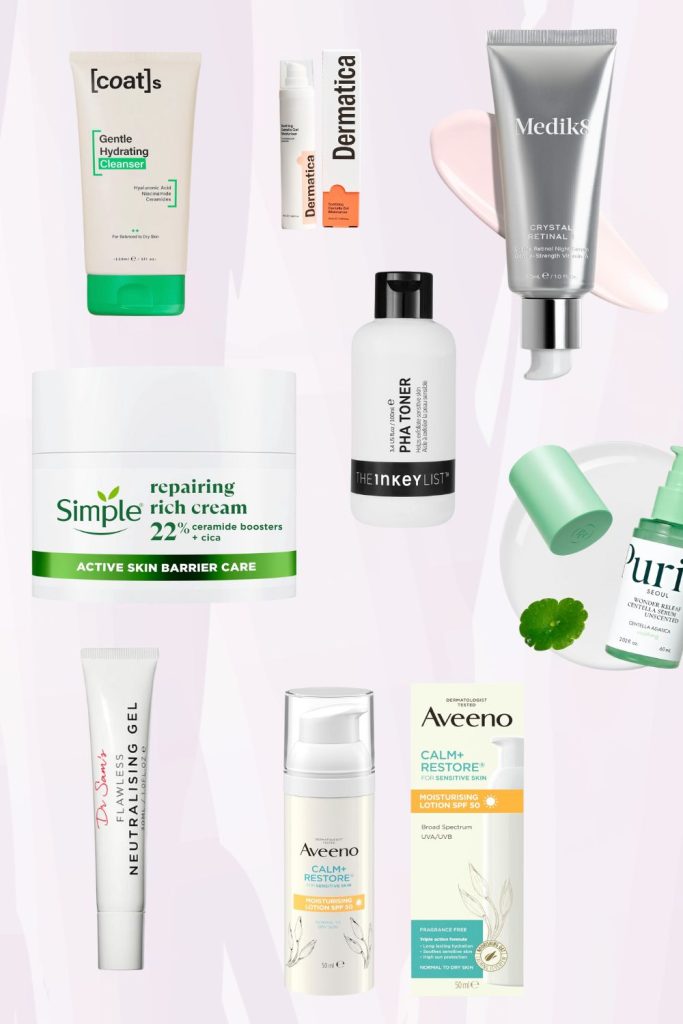
Though these skin types seem opposite, you can actually have them both at the same time. This is often referred to as combination skin. Although skin types are not medically recognised ‘types’, they can be helpful to sort through skincare products at times.
In this post, I’ll explain what combination skin is and how you can treat it effectively:
What is combination skin?
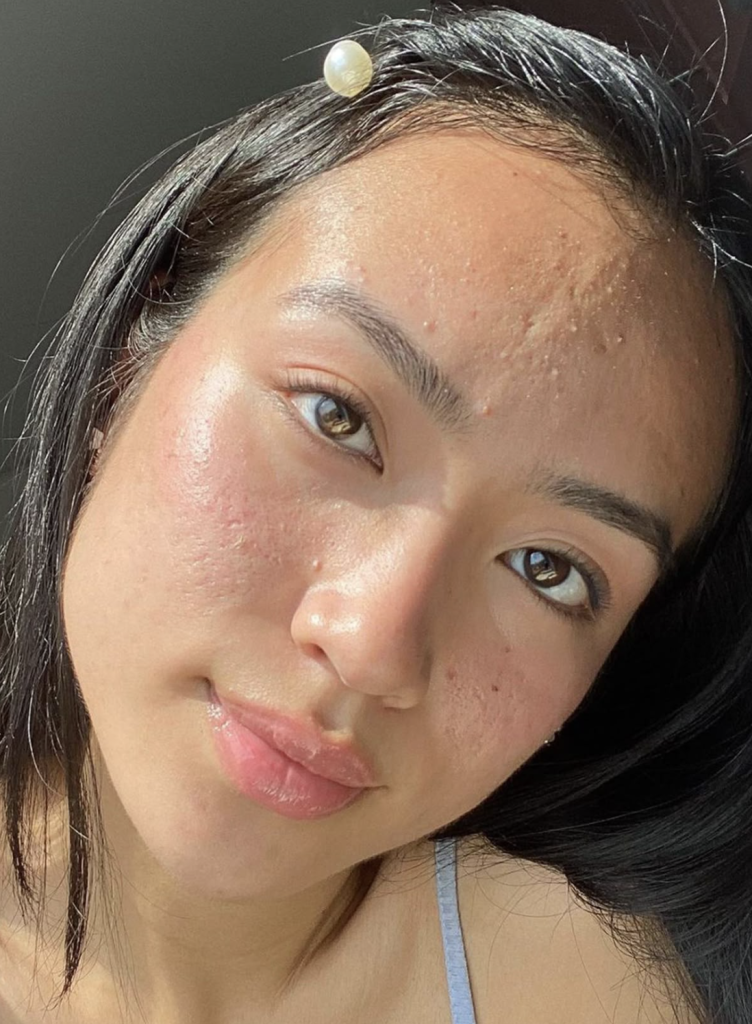
Combination skin is when different areas of your skin have opposite concerns. Usually, the T-zone (forehead, nose, and chin) is oily, while the cheeks and outer face are dry.
The combination skin type is manageable, but using the wrong products or habits can make dry areas drier and greasy areas greasier.
The result? Breakouts, irritation, uneven texture, and a dull complexion. You need a strategic routine for combination skin that treats each area of your skin differently, without being way too complicated.
How do you know if you have combination skin?
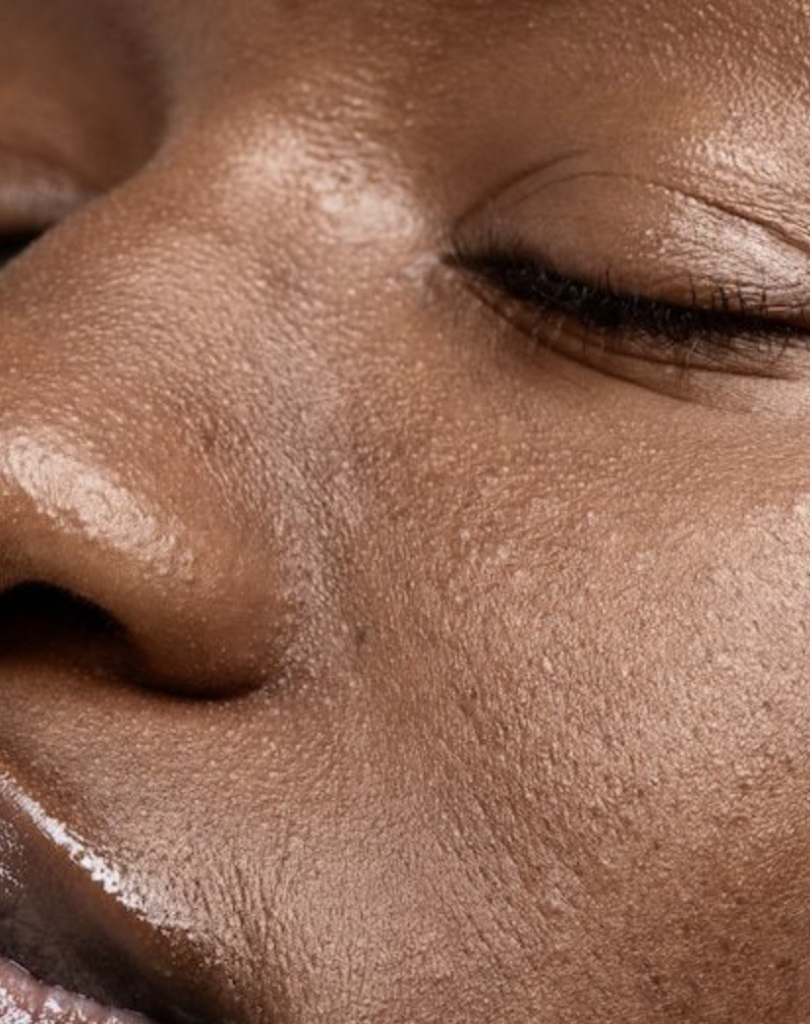
You can usually tell if you have combination skin just by looking in the mirror or paying attention to how your skin feels on your face. If your T-zone (forehead, nose, and chin) appears shiny with enlarged pores or occasional breakouts, while your cheeks and outer face feel dry, flaky, or rough, you likely have combination skin.
It’ll also be obvious by the way your skin feels. If the natural oil your skin produces is excessive in some areas and absent in others, you’re dealing with combination skin.
What does combination skin look like?
- Oily T-zone: Forehead, nose, and chin are shiny and prone to breakouts
- Dry cheeks: Cheeks and outer face may feel tight or flaky
- Mixed texture: Some areas are smooth while others feel rough or oily
- Visible pores: Larger pores appear in oily areas and tighter pores on other parts
- Seasonal changes: Oiliness and dryness can vary with the seasons
How to care for combination skin
Double cleanse at night, but skip cleansing in the morning

People with combination skin should double cleanse at night. This is one of those skincare trends that actually works, in my opinion. Especially for clogged pores, double cleansing can be game changing.
You start with an oil-based cleanser and then follow it with a water-based cleanser. The first round dissolves makeup, sunscreen, and oil, swear, dirt, while the second cleanse washes it all away thoroughly, along with he oil cleanser residue.
Of course, a double cleanse gets your skin really clean. However, the real advantage is that it deep cleans and removes excess oil or without stripping the drier areas of your skin.
In the morning, you could try only washing your face with water. It does feel weird at first but, personally, it changed my skin! I experience so much less random redness, breakouts and irritation since skipping morning cleansing. However, it’s not for everyone – the only way you can find out is by giving it a go for a while.
Do you need to use an alcohol-free toner to balance your skin’s pH?
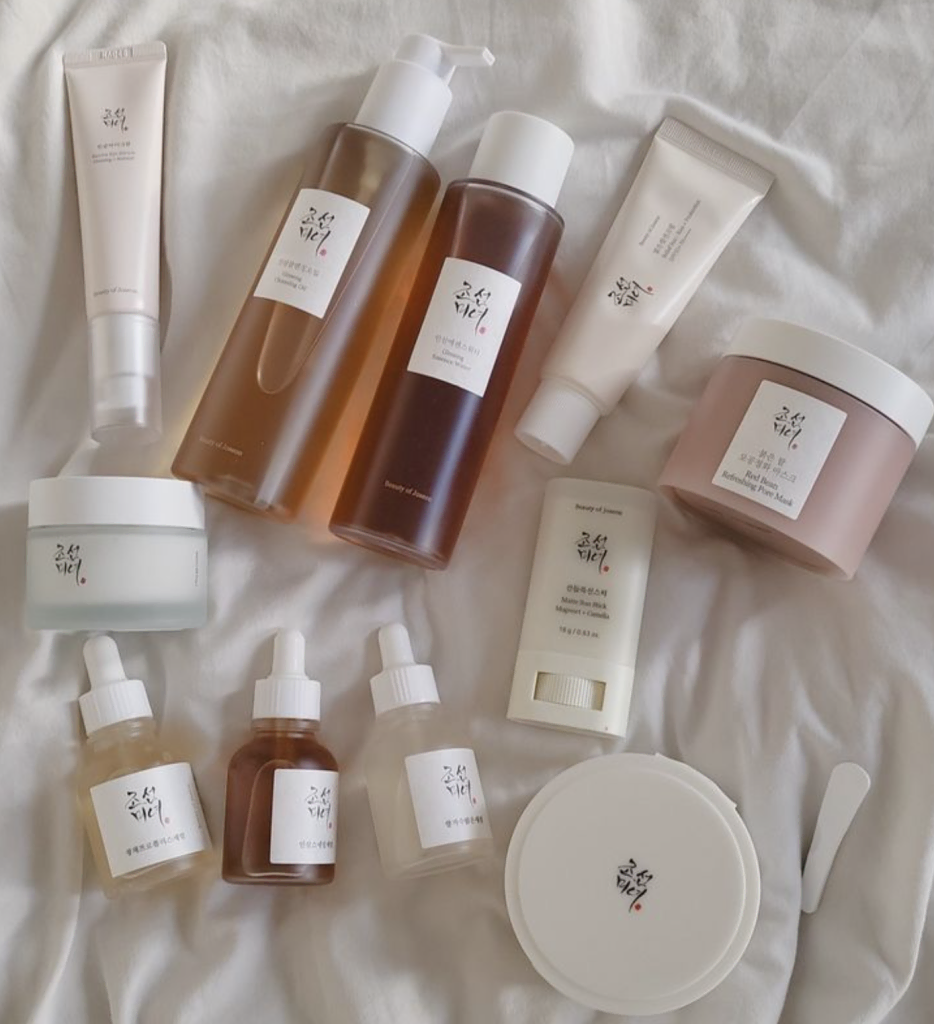
I get a lot of questions about cleansing and how it can disrupt your skin’s natural pH levels. I think this was truer a decade or two ago, but now beauty brands have mastered the art of gentle but effective cleansing.
A toner used to be used to help balance pH levels and remove any oil left behind after cleansing. Anything that contained alcohol could strip too much moisture from dry areas, causing irritation, skin tightness, or even flaking.
However these days they’re not really necessary. I don’t think toners are especially necessary unless you are looking for extra hydration, which can come in the form of a mist, serum or toner. Alcohol free is a good idea, though, to avoid over-drying your skin.
Blot with oil-absorbing pads to deal with greasy skin during the day

If you notice excess oil throughout the day (and you don’t wear makeup), you may be tempted to wash your face every few hours to reduce shine.
However, over-washing even with just water can damage your moisture barrier and dry out other areas of your skin.
Instead, use blotting paper or oil-absorbing pads to treat glossy or greasy skin texture. Just keep some in your handbag or at your work desk. Sometimes I literally just use a clean piece of toilet roll, for example, by pressing it into my face.
Exfoliate with chemical exfoliants instead of physical scrubs
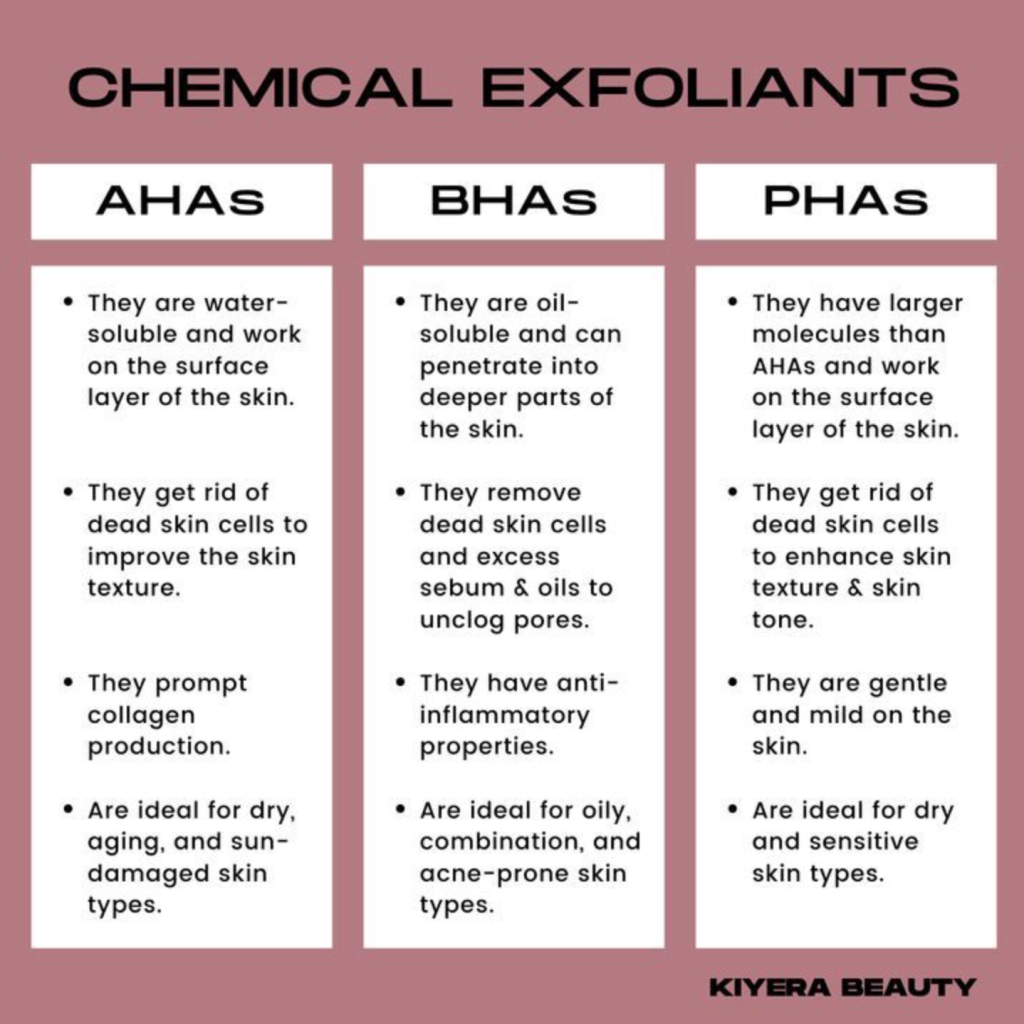
Exfoliation helps even skin texture, keeps pores clear, and improves your overall complexion. That said, I don’t recommend physical scrubs.
A physical exfoliant is often too abrasive – even if your skin is oily in areas, it doesn’t deserve to be brutally scrubbed against! But honestly, physical exfoliants don’t work well, anyway. Use a chemical exfoliant, regardless of skin type. They work in a much more sophisticated way by chemically breaking down dead skin cells and sebum, rather than ‘rubbing’ it off.
The amount you’ll want to chemically exfoliate depends on the rest of your routine. For example, if you use a retinoid you may not need to use one at all. But prior to using a retinoid, I used a chemical exfoliant a few times per week.
If your T-zone is oilier than the rest of your face, you can exfoliate that area more often than the rest of your face. This helps target your skin concerns without over-drying.
Apply different moisturisers to different areas of the face
Two moisturisers are not essential for combination skin, but sometimes it can be helpful. To avoid overcomplicating your combination skin care routine, you don’t need to use all of these tips – just trial a few and see what sticks.
A lightweight moisturiser helps balance oil production in your T-zone without clogging pores or adding shine.
A richer, heavier cream can work well for dry areas, providing hydration where natural oils are lacking and improving tone and texture.
Used together, the two moisturisers help achieve an even complexion – not too oily and not too dry anywhere on the face.
I try to avoid using multiple products, but I feel like I have to with SPF, for example. Yes it can be annoying but sometimes it just feels better to have happy skin, than the annoyance of using multiple products.
Spot treat instead of covering your whole face

When it’s time to treat combination skin, you should avoid covering your whole face with a product, especially if it’s potentially irritating. Each area has different needs, so set different goals for each zone if needed.
Hydrating products should be applied allover your skin. However, a spot treatment for acne should only go on breakout-prone, oily areas.
Be mindful of where and how you apply treatments. Being strategic with placement is key to achieving the best results. The main exception is with retinoids – don’t use these like a spot treatment, or else you’ll miss the anti aging benefits on certain areas.
Prioritise a good-quality daily sunscreen

Sunscreen is non-negotiable in any skincare routine, and combination skin is no exception.
Choose a lightweight formula that won’t add shine or clog pores, but still protects your skin from harmful UV rays.
Sun damage can worsen all your skin concerns. Whether it’s oily and dry areas, wrinkles, or hyperpigmentation, UV exposure will definitely aggravate things. Sun damage even makes your pores look larger over time, so it’s worth not skipping it!
Use lukewarm water instead of hot or cold

Your skin does not appreciate temperature extremes, no matter your skin type!
Hot water can strip your skin of natural oils, which can lead to further dehydration of dry areas and potentially trigger more oil production in greasy parts. It can also damage your skin barrier and cause breakouts, irritation and redness.
Cold water isn’t as bad, but it can contribute to dryness and make your cleansing process less effective. So, when it comes to skincare, use lukewarm water for the best results.
Maintain a healthy, resilient skin barrier
Barrier health is an often-overlooked part of skincare. Without your moisture barrier, your skin can’t retain hydration, defend against irritants, or protect itself from environmental damage.
For balanced oil production, a healthy moisture barrier is key. Include barrier-supporting products in your routine to help combination skin look and feel its best. I like to use it everyday as a preventative measure, not just when my skin barrier feels damaged.
Be mindful of your makeup ingredients
Makeup can be the missing piece for a lot of people with skin issues, and especially if you have areas of dry skin that makeup can cling to, you may go for glowier products.
Sometimes glowier products are richer and more likely to trigger breakouts, but what breaks someone out will be different for everyone. My key suggestion is to patch test base makeup products, like foundation. Here’s my guide on how to patch test new makeup and skincare.
What are the best skincare products for combination skin?
Old-Based Cleanser: The Ordinary Squalane Cleanser
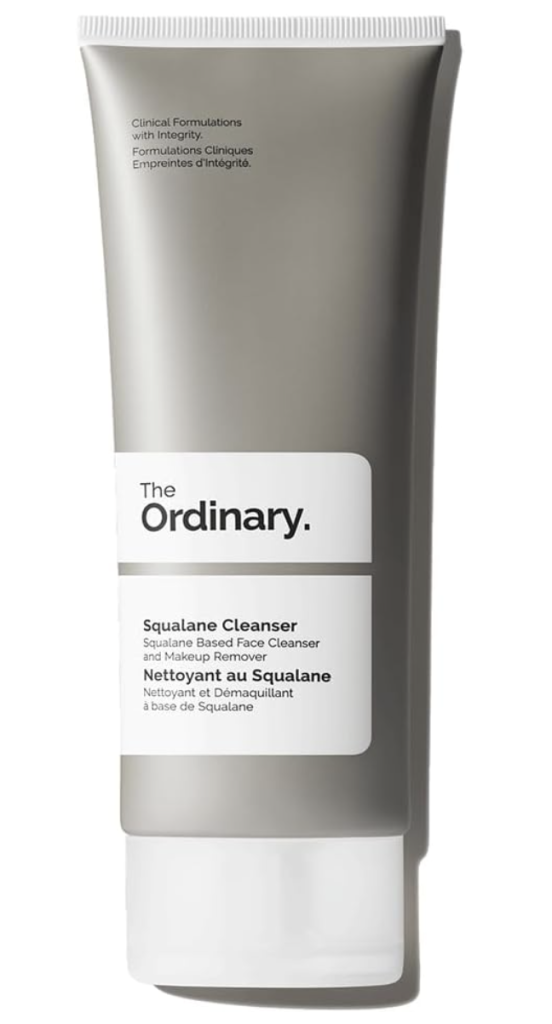
For the oil-based cleanser in your double cleanse, I like this one by Ordinary. It’s ideal for combination skin because the main ingredient is squalane.
Squalane is a lightweight, gentle cleanser that dissolves excess oil and residue from skincare products. The squalane actually mimics the skin’s natural oil, helping moisturise dry areas, balance oil production, and bolster the skin barrier.
Water-Based Cleanser: Coats Gentle Hydrating Cleanser

For your second cleanse, Coats Gentle Hydrating Cleanser is a good choice. It’s a mild cleanser that gently removes any remaining impurities from the first cleanse without overdrying.
The glycerin and aloe vera in the formula help draw moisture into dry areas while still controlling excess oil in the T-zone. It helps keep everything balanced.
Chemical Exfoliant Toner: The 1NKey List PHA Toner
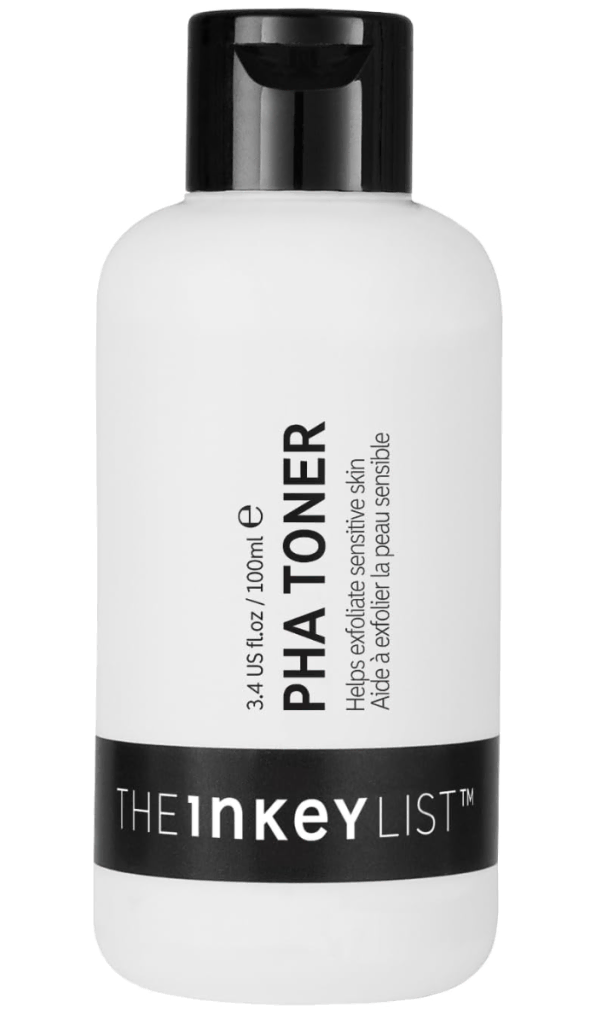
This toner uses polyhydroxy acid (PHA), which is an extremely gentle exfoliant. This is gentler than salicylic acid, suitable for slightly more regular use (though not daily).
It has niacinamide to strengthen the skin barrier and panthenol to provide additional hydration, plus it’s fragrance and essential oil free (a must for me in any new skincare I try).
Barrier Serum: Purito Centella Serum

I always recommend a barrier serum, and this one by Purito is great for combination skin. It’s lightweight, absorbs quickly, and offers a good mix of benefits for both dry and oily areas.
The ingredients lock in hydration, balance oil throughout the face, and support both barrier repair and resilience. The centella asiatica will also help heal and calm inflammation, preventing reactivity in the drier parts of the face.
Treatment: Medik8 Crystal Retinal

In your evening routine, you should consider using a retinoid 2-3 times a week. They address multiple skin concerns at once, without overcomplicating your skincare routine, which I like. Build up to the 2-3x a week, don’t start off at that frequency.
The main goal of a retinoid is to speed up cell turnover, evening out skin texture. Oily areas become less greasy. Dry areas become less rough. Everything evens out beautifully.
If you’re prone to breakouts on those oily parts of your face, retinoids will help with that, too. (Read more on retinoids and breakouts HERE.)
Most products out there are “retinols,” but this one is a “retinal.” It uses retinaldehyde, which is stronger than most over-the-counter retinoids without being too harsh on the skin.
It’s honestly one of the best products you can add to your routine to balance and treat combination skin very quickly. (A retinal works up to 11x faster than a standard cosmetic retinol. It’s just a better product.) Definitely include it in your combination skincare routine.
Here’s more on retinals vs retinols and my experience with Medik8 Crystal.
Spot Treatment: Dr. Sam’s Flawless Neutralising Gel
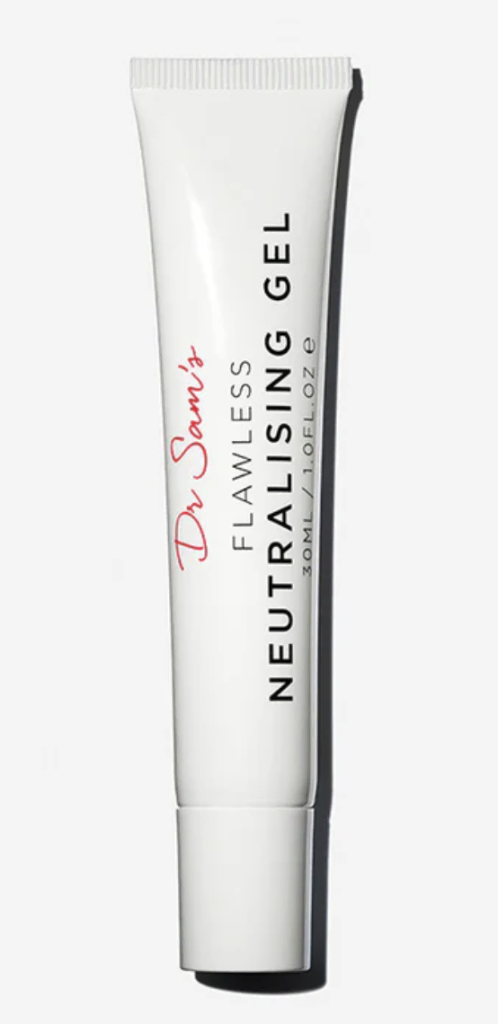
This product can be used in one of two ways. First, after you exfoliate, some areas of your skin may be a little irritated and dry. You can apply this spot treatment to those areas to hydrate, soothe, and restore the skin barrier.
Second, you can use it to target oily or acne-prone areas. It’ll help unclog pores, reduce inflammation, and treat breakouts.
I like spot treatments for combination skin, because each area of your face has different needs. All-over products sometimes worsen the problems.
Lightweight Moisturiser: Dermatica Daily Soothing Centella Gel Moisturiser
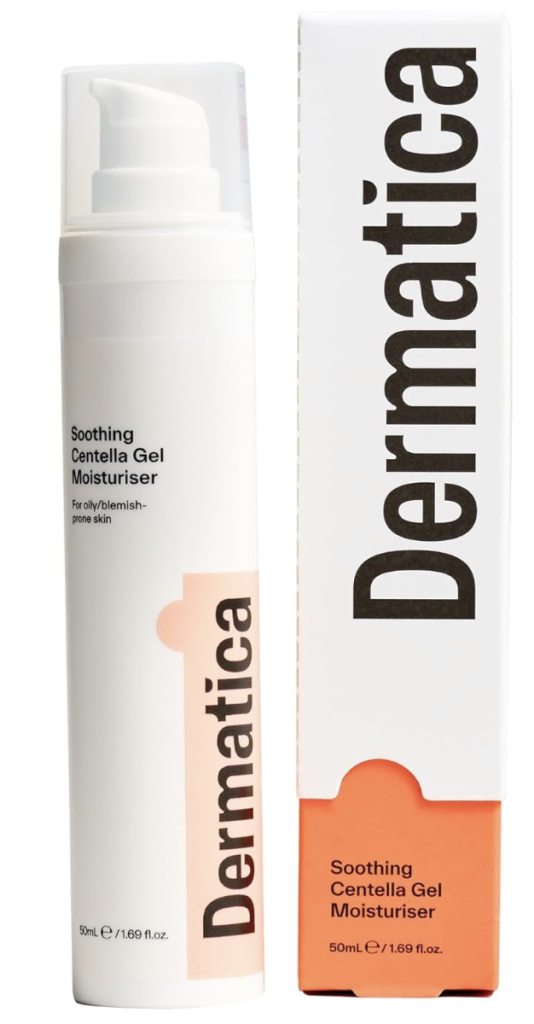
A lightweight gel moisturiser, like this one from Dermatica, works best for the oily areas of your face.
It keeps skin hydrated to prevent excess oil production without adding greasiness or shine. Since these areas already get moisture from your skin’s natural oils, a lightweight formula is enough to maintain balance.
Heavy Moisturiser: Simple Repairing Rich Cream

For dry areas, where natural oils are lacking, a lightweight moisturiser usually isn’t rich enough to hydrate and smooth the skin, you could try a thicker cream.
Simple Repairing Rich Cream is a great choice because it contains multiple hydrating ingredients along with ceramide boosters to strengthen the skin barrier. It provides deep hydration to restore even the driest areas of your face.
Lightweight Sunscreen: Aveeno Face CALM+RESTORE Moisturising Lotion SPF 50

Sunscreen is essential for all skin types and skincare routines. I recommend a lightweight option like Aveeno’s Calm & Restore SPF50, which offers full-face protection without aggravating skin concerns.
It absorbs quickly with no greasy finish, making it ideal for oily areas, while hyaluronic acid and vitamin E help hydrate the drier parts of your skin. The finish is lightly dewy but not greasy at all. Using a sunscreen like this daily helps keep your combination skin balanced and protected from long-term damage.
For more recommendations, here are the best sunscreens for clog-prone skin and closed comedones.
Combination skin is manageable with the right products and skincare routine.
Combination skin can be challenging to deal with. Unlike other skin types, you’re managing multiple, contradictory concerns at once.
It can be tricky at first, but using these tips and product recommendations to treat each part of your face separately will help you achieve a balanced, healthy complexion.
For more skincare advice and product recommendations, browse the rest of my blog and follow me on TikTok.